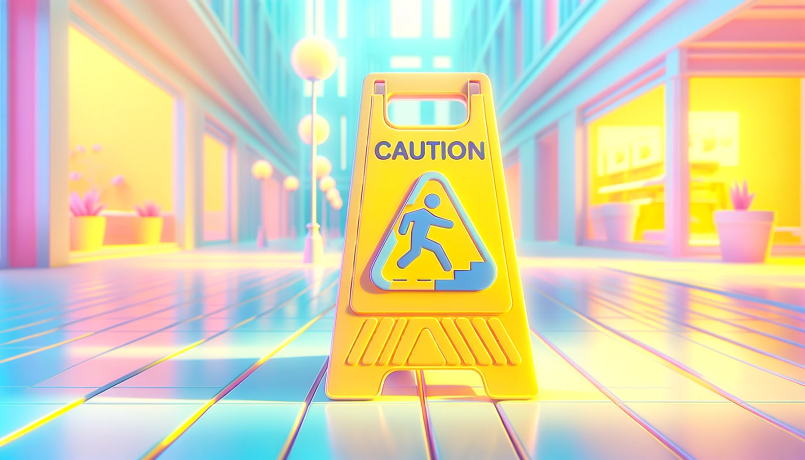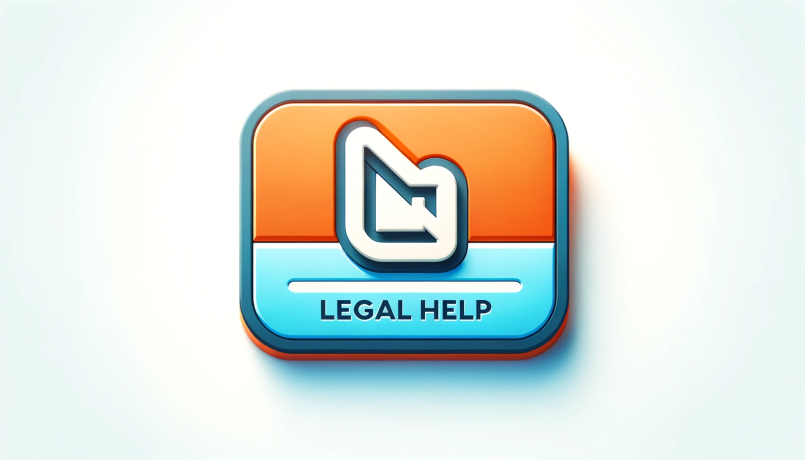
If you or a loved one has suffered injuries from a preventable slip and fall accident, use this guide to understand your legal rights in pursuing potential negligence claims. We walk through pragmatic steps from reporting incidents to gathering evidence, proving liability, calculating damages and negotiating fair settlements.
by LawInc Staff
December 16, 2023
With over one million emergency room visits annually linked to slip and fall accidents, they constitute one of the leading causes of unintentional injuries in the country. However, accident victims may have legal grounds to pursue injury compensation for verifiable negligence in private or public spaces.
If you suffered slip and fall injuries, understanding key legal protocols and response steps can be vital for increasing the odds of a favorable resolution. This guide outlines critical measures accident victims should take to build their slip and fall case.
1. Report and Document the Incident
-
- File a Report: Formally notify the property owner/manager about the accident and injuries immediately afterward.
- Gather Evidence: Take date-stamped photos and videos detailing the slip and fall location, dangerous condition, injury impact etc.
- Eyewitness Accounts: Obtain contact details of anyone who saw the accident for later testimony.
- Medical Records: Well-documented medical reports attributing injuries to the accident bolster the case.
- Keep Receipts: Retain records of all accident-related expenses – medical bills, lost income etc.
Examples:
-
- Maria immediately told the grocery store manager about her slip and fall accident before going to the ER.
- Justin took photos of the wet floor with no caution sign which caused him to slip in the lobby.
- Simone obtained the business card of a woman who saw her fall on the icy sidewalk.
- Jeremy’s medical report directly linked his broken wrist to the hotel bathroom slip and fall incident.
- Fatima meticulously compiled all prescription, medical equipment and transportation costs.
How to Proceed:
-
- Follow up the initial report in writing indicating intent to seek damages.
- Consult a personal injury attorney to review evidence and build a strong negligence case.
- The lawyer can send a demand letter initiating pre-trial settlement negotiations if warranted.
- Alternatively, file a lawsuit against negligent parties before the statute of limitations expires.
- Be prepared to prove causation and damages throughout legal proceedings if needed.
FAQs:
-
- What if I forgot to file an initial report? It harms the case, but notify them ASAP with a written account.
- What types of evidence substantiate slip & fall claims? Photos/video of hazards, medical reports of injuries, safety documentation etc.
- Should I gather evidence even for minor accidents? Yes, circumstances can change over time, worsening impact.
- What expenses should I track post-accident? Medical bills, prescriptions, lost wages, transportation costs and household/childcare assistance.
- If there were no witnesses, can I still pursue a case? Yes, other evidence like security footage or successful premises cases can suffice.
2. Establish Liability Factors
-
- Negligent Act or Omission: Must prove the property owner’s negligent failure to identify slipping hazards or rectify them.
- Maintaining Unsafe Conditions: Evidence showing repeat offenses of unaddressed safety hazards strengthens case.
- Established Standards: Violations of state safety standards, building codes or industry best practices help demonstrate negligence.
- Inadequate Warning Signs: Lack of warning indicators in high hazards areas indicates neglect and disregard.
- Prior Incidents: Documentation of previous similar accidents highlight awareness yet failure to prevent recurrences.
Examples:
-
- Snow was improperly cleared from walkways against city regulation.
- Flooring had observable cracks posing obvious trip hazards for months.
- A restaurant’s cleaning product label issued proper slip hazard warning.
- Previous legal complaints alerted the mall to escalator risks.
- No salt, sand or deicer was applied though icy stairs were reported.
How to Proceed:
-
- Contact a personal injury lawyer experienced in premises liability cases.
- Advance negotiations using substantiated evidence prior to formal filings.
- Unless reasonable settlement offers, proceed to court litigation.
- Provide testimony outlining the full accident and its continuing impact.
- Let your attorney handle communications, filings and legal formalities throughout all procedures.
FAQs:
-
- What if no visible defects were observable but I still slipped? Consider additional causes like cleaning agents/debris or structural failures like loose tiles.
- Does signage warning of wet floors alone absolve liability? No, active safety precautions are still required by law.
- What if I can’t definitively prove why I slipped and fell? Circumstantial evidence can still demonstrate conditions were dangerously unsafe.
- Do I need an expert witness for technical data? Yes, experts can provide key evidence explaining how safety standards apply.
- Can I be accused of partial responsibility? Yes, but comparative negligence principles still compensate you proportionately to their liability.
3. Seek Accountability from Liable Parties
-
- Property Owners: Owners are accountable for unsafe premises causing injury to occupants or visitors.
- Businesses: Commercial establishments must regularly inspect for hazards and are liable if accidents result from negligence.
- Contractors: Construction companies and contracted service providers hold shared duty to maintain safety.
- Local Governments: Municipalities must ensure public sidewalks, parks and infrastructure do not pose preventable risks.
- Joint & Several Liability: If multiple parties are culpable, each can be held fully accountable for total damages.
Examples:
-
- The landlord failed to salt icy walkways per city ordinance.
- A store’s cleaning crew left spill residue untreated for hours.
- Loose carpeting in the office was not securely reaffixed after cleaning.
- A playground’s splintered equipment caused injury to a toddler.
- Unmarked road works by city contractors posed tripping hazards.
How to Proceed:
-
- Formally notify all potentially liable parties in writing.
- File suit against the primary negligent party first.
- Later add secondary respondents via amended or cross complaints.
- Let your lawyer handle communications and complex legal processes.
- Provide all supporting evidence like medical reports when requested.
FAQs:
-
- Can I personally notify all potentially liable parties? Yes, but use templates from your attorney.
- What if one party tries to shift full blame? Your lawyer can refute attempts to avoid shared accountability.
- Is there a time limit to add other liable parties? Yes, your lawyer will know statutes of limitation to join them.
- Can I claim from insurance companies directly? You can try initially, but often end up needing litigation.
- How long could joint lawsuits take to resolve? Complex cases with multiple defendants can take over a year.
4. Calculate Damages and Losses
-
- Medical Expenses: Current and projected costs of medical treatment, therapy, assistive devices, rehabilitation etc.
- Lost Income: Actual or potential salary and benefits lost owing to injury-related absence from work.
- Loss of Earning Capacity: Future impact on employment and diminished income due to disability.
- Pain and Suffering: Physical anguish, emotional trauma, lowered quality of life warrant financial redress.
- Misc. Expenses: Outlays for household help, property damage, vocational retraining etc.
Examples:
-
- Surgery, physical therapy, crutches – $31,000
- 6 months lost wages – $26,000
- Lifelong hip injury blocks plumbing career
- Depression, relationship struggles from chronic pain
- Wheelchair ramp & home health aide – $15,000
How to Proceed:
-
- Maintain detailed records of all expenses and income losses.
- Obtain doctors’ assessments quantifying disability levels and prognosis.
- Have appropriate experts analyze earning capacity reductions.
- Consider therapy to deal with emotional & psychological effects.
- Consult lawyer periodically to ensure claim accuracy as losses accumulate.
FAQs:
-
- How long do I have to finalize my claim amounts? Typically you can amend until trial, but consult your lawyer on court processes.
- Can projected future costs be claimed too? Yes, with documented probability from your healthcare providers.
- Is compensation taxable? Most personal injury settlement amounts paid directly to you are non-taxable.
- How are pain and suffering damages calculated? Very subjectively – expect intense negotiation by the defense.
- Is there a cap on damages I can claim? It varies; your lawyer will know if caps apply and help maximize your recovery.
5. Negotiate an Optimal Settlement
-
- Pre-Trial Settlements: Majority of injury claims settle out-of-court through private negotiations.
- Reasonable Compensation: Insurance carriers often make acceptable offers to avoid litigation expenses.
- Mediation Assistance: Third-party mediator guidance improves prospects of equitable agreement.
- Court-Ordered Resolution: Judges can mandate an official settlement if trial outcome seems unpredictable.
- Structured Payments: Allows tax-advantaged plans to receive settlement money over years.
Examples:
-
- Settled just before trial for $425,000 and avoided litigation delays.
- Mediator facilitated mutually agreeable $250,000 settlement.
- Court pushed parties into $1.2M settlement after 2 years of disputes.
- Opted for structured $900k payout to improve financial planning.
- Insurer offered quick $100k settlement, but was refused for being inadequate.
How to Proceed:
-
- Hire the best lawyer you can find that is willing to take your case and negotiate skillfully on your behalf.
- Be prepared to provide extensive medical documentation to support demands.
- Consider lowering expectations if recommended by lawyers as trial risks.
- However, don’t settle too quickly without exploring options thoroughly.
- Timing plays a big role; analyze offers carefully before agreeing.
FAQs:
-
- Will my lawyer push for fast settlement? Ethical lawyers will advise reasonably based on case merits rather than ease.
- Can I negotiate the settlement terms? Yes absolutely, your needs and preferences can shape customized agreements.
- Are all cash settlements taxable? No, financial instruments like annuities can yield some tax savings.
- What if new medical issues manifest years later? You can request additional compensation but it becomes more complex.
- When can I expect payment if settlement reached? Typically within 30-60 days once releases are signed and terms fulfilled.
6. Represent Yourself Effectively in Court
-
- Deposition Statements: Explain circumstances and losses clearly; testimony may strengthen case and settlement leverage.
- Courtroom Demeanor: The judge and jury draw conclusions about your condition from appearance and conduct – dress neatly and act respectfully.
- Consistent Messaging: Stick to the facts providing the same accounts of the incident, nature of injuries and impacts each time.
- Sincere Communication: Polite, truthful statements emphasizing hardship inflicted often spurs empathy from the adjudicators.
- Follow Attorney Guidance: Answer questions briefly with responses vetted by lawyers beforehand to stay on point and positive.
Examples:
-
- Angela stuck to the same script about the unsafe waxing and resultant head injury.
- William emphasized being severely hampered from performing his warehouse job.
- Fatima shed tears describing strains from missing her daughter’s graduation.
- Ronald appeared at trial neatly dressed with a humble, respectful demeanor.
- Jun kept answers brief, only conveying facts the attorneys had approved discussing.
How to Proceed:
-
- Be yourself while sticking to consistent accounts of factual events.
- Remain calm under rigorous cross-examination.
- Highlight hardship but don’t exaggerate or feign effects.
- Respect courtroom rules and jury mandates throughout the proceedings.
- Defer to lawyers for objections or contentious interactions.
FAQs:
-
- Will my entire medical history be exposed? Possibly – discuss privacy concerns with legal counsel beforehand.
- Can I have notes on hand during testimony? No, but thoroughly prep answers expected questions with lawyers beforehand.
- What if I get overwhelmed on the stand? Request a break and regroup with your attorneys.
- Is crying or anger okay? Express natural reactions but avoid excessive displays.
- What if I realize a statement I made earlier was inaccurate? During next opportunity, politely correct yourself or defer to your lawyers.
7. Prepare for Rigorous Questioning
-
- Verify Accounts Diligently: Assume intensive questioning on the mechanics of the accident, nature of injuries and their impacts.
- Anticipate Skepticism: Expect queries doubting sincerity of claims, gaps in dates or details, pre-existing conditions etc.
- Difficult Questions: Tricky phrasing of inquiries intend to trip you up – listen carefully and seek clarification.
- Hypothetical Scenarios: Be prepared for speculative questions on alternate causes, behaviors, losses etc. rooted in facts.
- Mock Sessions: Practice addressing hard questions to avoid surprises and improve responses.
Examples:
-
- Defense scrutinized Renee on bosses firing her for laziness verses disability.
- Doctors posited if Alan would have developed arthritis anyway.
- Lawyers tied James up questioning other reasons for limping.
- Experts made Liam contemplate if quicker reflexes could have prevented the accident.
- Adjusters asked if Elena visited any other doctors prior who warned of risks.
How to Proceed:
-
- Expect grueling questioning and plan responses ahead with attorneys.
- If queries seem misleading, request clarifying details.
- Refer to reliable evidence like medical data to counter doubts.
- Mention lost records if unable to address specifics convincingly.
- Redirect excessive questions to legal counsel; don’t guess unknowns.
FAQs:
-
- Am I expected to remember everything perfectly? No, small reasonable memory gaps are understandable.
- What if records disprove part of my account? Clarify context politely – some discrepancy is normal.
- Can hypotheticals establish contradictions? Yes, listen very carefully before responding.
- What if questions get too uncomfortable? Request the judge to limit sensitive inquiries unrelated to facts.
- Will my social media posts be scrutinized? Very possibly – review online history thoroughly beforehand.
8. Make Smart Financial Decisions
-
- Manage Lump Sums Wisely: Investment guidance maximizes settlement money to support long-term needs.
- Create Savings Funds: Set aside portions to cover post-settlement medical costs and household help.
- Pay Down Debt: Reduce loans and credit balances to improve cash flow.
- Upgrade Housing: If disabilities now require accessibility features or relocation.
- Treat Yourself Minimally: Small splurges are fine but avoid large unnecessary purchases initially.
Examples:
-
- Micah’s advisor helped him invest settlement proceeds wisely.
- Tina made her home wheel-chair friendly.
- Vince repaid high-interest debts first.
- Wendy allotted funds anticipating more surgery down the road.
- Yvonne resisted splurging settlement on lavish vacations.
How to Proceed:
-
- Consult financial experts on maximizing lump sum funds.
- Analyze future costs and save appropriately.
- Invest conservatively focusing on wealth preservation.
- Make required life modifications before gratuitous indulgences.
- Refrain from risky business ventures or get-rich schemes.
FAQs:
-
- What amount should go towards immediate needs vs long-term? Evaluate unique situation diligently; guidance is recommended.
- How strictly are structured settlement schedules enforced? Legally binding contracts so strictly, but certain hardship provisions can apply.
- Can I use funds to start a business? Not advisable initially – preserve capital till fully recovered.
- What luxury purchases are appropriate? Small splurges fine, but avoid large unnecessary expenditures.
- How soon can I expect to receive settlement money? From a few weeks to months after final signatures, depending on terms.
9. Rebuild Your Life Post-Settlement
-
- Ongoing Medical Care: Continue treatments even after settlement to maximize recovery prospects.
- Physical Rehabilitation: Follow professionals’ exercise recommendations to regaining strength and mobility.
- Home & Vehicle Modifications: Convert residence and transport for accessibility based on permanent or temporary disabilities.
- Social Integration: Connecting with support groups can ease emotional recovery and adjustment difficulties.
- Career Guidance: Consult vocational rehab specialists on supplemental training for alternate jobs if needed.
Examples:
-
- Amanda kept up with physical therapy years later.
- Dexter made his bathrooms wheelchair accessible.
- Laila’s support group gave her coping strategies.
- Nathan did job retraining to adapt to new disabilities.
- Penny altered her SUV driving controls to manage paralysis.
How to Proceed:
-
- Commit to health improvement regardless of settlement status.
- Adapt your environment and equipment to accommodate changed abilities.
- Utilize mobility, homecare and accessibility offerings fully.
- Pursue purpose via adjusted career goals or voluntary community work.
- Embrace support avenues to offset emotional tolls.
FAQs:
-
- Are there any recommended timelines for recovery?Widely vary based on injuries; follow medical provider guidance diligently.
- Will lifestyle adjustments get easier over time? Typically yes as you establish new norms and capabilities.
- What additional help options exist beyond settlement money? State vocational programs, disability benefits, Medicaid waivers, charities and more.
- Can lingering medical issues be claimed later? Very limited options – best to project long-term effects initially.
- How soon should estate plans be updated after major injury? Immediately consult financial advisors and amend documents.
10. Prepare Well for Media Attention
-
- Typical Curiosity: High value settlements often draw basic media interest about the parties, case and outcome.
- Respect Privacy: Journalists may still pry insensitively, so enforce boundaries around off-limits topics.
- Avoid Misquotes: Decline live interviews; provide written statements instead to control messaging accurately.
- Engage Strategically: Some exposure can advance public safety concerns but avoid politics or blame games.
- Redirect Invasiveness: Report harassing behaviors to authorities and inform media outlets’ ethics committees.
Examples:
-
- Gabby declined a TV interview request politely after receiving a huge settlement.
- Josiah shared limited approved statements on his case through his attorney only.
- Aakansha’s family reprimanded a reporter asking insensitive questions.
- Declan wrote an op-ed supporting stricter safety codes after his incident.
- Fatima filed a complaint over a journalist using photos of her children unapproved.
How to Proceed:
-
- Never talk to media without counsel approving questions/statements first.
- Firmly decline insensitive lines of questioning while being cooperative.
- Consider one general interview at settlement but avoid extensive exposure.
- Use discretion on what personal information to share publicly.
- Involve attorneys promptly if journalists overstep ethical bounds.
FAQs:
-
- Are reporters ever prohibited from contacting me? They must cease upon written request. Get templates from counsel.
- How can I restrict them from discussing certain matters? Categorically communicate subjects off-limits like family details, health etc.
- What if news coverage feels slanted negatively? Issue corrections focusing only on factual inaccuracies.
- Is going fully “off-record” an option? Yes, decline interviews definitively if preferred.
- Can I offer exclusive stories in exchange for favors? Proceed cautiously with counsel guidance to control narratives.
11. Pay it Forward From Your Settlement
-
- Lend Your Voice: Advocate for policy changes related to accident causes and prevention.
- Support Charities: Donate to nonprofits funding medical research into injuries or conditions.
- Community Enrichment: Forward portions to local organizations assisting accident survivors, rehabilitation, crisis relief etc.
- First Responder Backing: Contribute to agencies related to those who may have initially helped post-accident.
- Establish Memorial Funds: Create tax-advantaged awards honoring victims and promoting education/prevention.
Examples:
-
- The Khan family started a scholarship program for those impacted by drunk drivers after losing their son.
- Salma lobbied her state legislature in support of increased trucking regulations post-settlement.
- Yusef donated a percentage of personal injury proceeds to the children’s hospital who treated his injuries.
- Chang gifted settlement funds to remodel the small-town rescue squad facility central to initial care response in his farming accident.
- Wendy contributed to foundations advancing melanoma therapies which she battled after a slip and fall head wound.
How to Proceed:
-
- Evaluate causes behind the incident and associated support resources.
- Research reputable charities assisting similarly affected groups.
- Consult financial advisors on best donation strategies for tax purposes.
- Spread contributions across desired channels for amplified impact.
- Leverage any public platform responsibly to enact positive reforms.
FAQs:
-
- What portion of funds should I dedicate to donating? No fixed rule – your situation, passions and interests should guide.
- Are my own future needs secured first before giving? Yes, never donate at the expense of planning wisely for ongoing care, living costs etc.
- How do I research credible institutions to receive funds? Consult experts, read annual reports, media coverage etc. to vet thoroughly.
- Can donations be anonymous if I wish? Absolutely, reputable groups can facilitate privacy preferences.
- What memorializing options exist besides scholarships? Building naming rights, endowed faculty chairs, program sponsorships etc. based on organizations’ policies.
Summary
The personal injury settlement process can be complex, intrusive and unpredictable. But utilizing professional guidance and prioritizing emotional well-being can help accident victims emerge from even the most tragic events on steady footing. Contact us if you need legal help.
Stay focused on your health above all else while allowing legal experts to handle negotiations firmly but fairly. Though monetary compensation can support recovery needs, true justice comes from preventing such incidents happening to others. Consider paying settlement advantages forward to provide that lasting impact.
Slip and Fall Injury Quiz
-
-
- 1. Failing to file an incident report can: A) Weaken the case B) Be inadmissible C) Be irrelevant
- 2. Primary evidence should capture: A) Photographs of hazards B) Medical reports of injuries C) Eyewitness accounts D) All of the above
- 3. To prove liability, maintenance records indicating: A) Previous complaints B) No safety violations C) Routine inspections
- 4. Violations of safety codes or industry standards show: A) Insufficient warnings B) Lack of diligence C) Both A and B
- 5. Circumstantial evidence can still demonstrate: A) Reckless conduct B) Dangerous conditions C) Causative factors
- 6. Comparative negligence principles: A) Bar accident claims fully B) Reduce compensation proportionately C) Require specialized legal expertise
- 7. Documentation should capture: A) Ongoing medical expenses B) Lost income records C) Both A and B
- 8. Settlements are typically: A) Court-ordered B) Privately negotiated C) Reached only post-trial
- 9. Structured settlements offer: A) Lump sum payouts B) Tax advantages C) Fixed schedules
- 10. Testimony preparation should address: A) Intense cross-examinations B) Hypothetical scenarios C) Both A and B
- 11. Uncooperative insurers warrant: A) Accepting inadequate offers B) A quick lawsuit C) Aggressive demands
- 12. If settlement talks stall, next steps include: A) Altering amount demands B) Pursuing courtroom litigation C) Surrendering the claim
- 13. Assuming a premises liability case is straightforward without professional counsel risks: A) Delayed compensation B) Insufficient recovery amounts C) Rejection of the claim
- 14. Even after resolving a claim, new medical problems could necessitate: A) Workplace accommodation requests B) Additional compensation claims C) Both A and B
- 15. Thoroughly documenting evidence provides the benefits of: A) Convincing insurers of claim validity B) Meeting litigation evidentiary rules C) Both A and B
- 16. Settling quickly for inadequate amounts risks: A) Rightful entitlements B) Long-term needs C) Nullifying claims forever
- 17. The strongest negotiator against insurance companies is: A) The claimant themselves B) An aggressive attorney C) Government regulators
- 18. Common settlement payout exclusions often still cover: A) Medical costs B) Lost income C) Both A and B
- 19. Assuming liability investigations performed internally saves: A) Legal expenses B) Settlement totals C) Claim validity
- 20. Having realistic expectations about claim value determination can: A) Expedite settlement B) Maximize compensation C) Avoid courtroom litigation
- Answers:
- 1: A) Weaken the case
- 2: D) All of the above
- 3: A) Previous complaints
- 4: C) Both A and B
- 5: B) Dangerous conditions
- 6: B) Reduce compensation proportionately
- 7: C) Both A and B
- 8: B) Privately negotiated
- 9: B) Tax advantages
- 10: C) Both A and B
- 11: A) Accepting inadequate offers
- 12: B) Pursuing courtroom litigation
- 13: B) Insufficient recovery amounts
- 14: C) Both A and B
- 15: C) Both A and B
- 16: A) Rightful entitlements
- 17: B) An aggressive attorney
- 18: C) Both A and B
- 19: B) Settlement totals
- 20: C) Avoid courtroom litigation
-
Need Help With Your Slip & Fall Injury Claim?
Consulting with an attorney is highly recommended if you or a family member suffered injury due to a property owner’s negligence and wish to explore legal claims for full compensation rights.
Contact us to connect with a vetted slip and fall personal injury attorney for a free case assessment and guidance through legal processes for pursuing maximum justified recovery.
Disclaimer:
The information presented in this article is for general educational purposes only and does not constitute formal legal advice. Each accident situation carries unique evidence and circumstances that impact potential liability and compensation outcomes. We recommend directly contacting a qualified personal injury attorney for guidance tailored to the particular details of your slip and fall case.
Laws and regulations regarding premises accidents, injury cases, and lawsuits can also vary based on jurisdiction.












